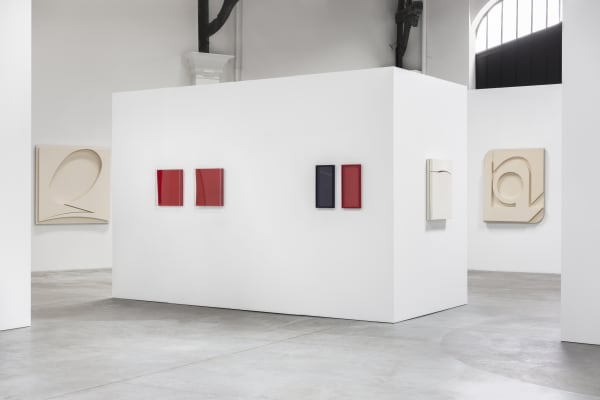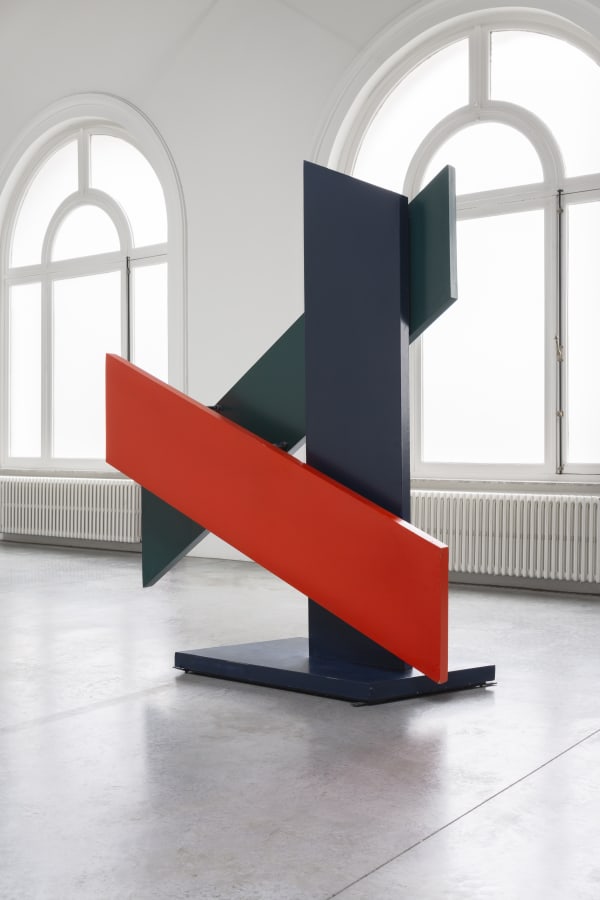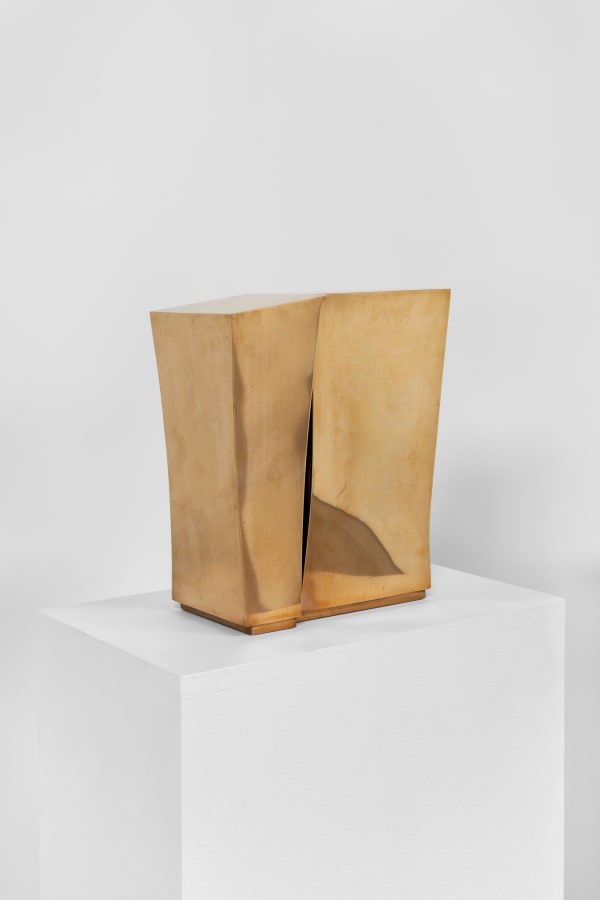LE LANGAGE DES OMBRES: FRANCIS DUSEPULCHRE
The gallery presents its first solo show of the work of Francis Dusépulchre (1934 – 2013).
This unclassifiable artist, whose extremely personal production makes him particularly recognizable, had already been the subject of a strong and noticed presence at the Sculpting Belgium exhibition in 2017.
Having promoted Dusépulchre at various salons in Belgium and abroad since then, the gallery is delighted to present this solo exhibition which was as imperative as much as it was expected, displaying works that have had little to no public exposure, straight from the artist’s workshop.
Francis Dusépulchre’s work is not without recalling, through its minimalism, certain aspects of Fontana’s work, and yet it departs from it by its purpose: Dusépulchre does not deny the surface by lacerating it, he does not cut the support to create a rift made of black and colors. He realizes, in the sense of becoming real, the pictorial surface of his curved panels, he questions the absent volume of his plexi boxes, filled only with the edges of disappeared planes, he slightly hides the planes by incising them, by pricking them with a point of light, by warping them and by endowing them with ribs to better question their nature, using the monochrome on exclusively orthogonal shapes, at least it is believed, as in fact right angles and parallels are rare, the artist playing with our perception to better bring us into a visual trap, not devoid of humor moreover!
With these reliefs, Dusépulchre pursued the spatial exploration which his elders had instigated. In Belgium, Jo Delahaut started working on monochrome reliefs from 1950 forward, to examine the relation of the painting with the wall surface and its environment. Three years later, Pol Bury exhibited his first Plans Mobiles at the Apollo Gallery in Brussels, writing “Veuillez toucher” (please touch) alongside, inviting the beholder to instil movement into the geometrical shapes of these reliefs.
In the same manner as Paul Van Hoeydonck, Guy Vandenbranden, Gilbert Swimberghe, Francis Olin, Marthe Wéry or Pál Horváth, Francis Dusépulchre is part of this generation of Belgian artists seeking to broaden the field of abstract art which emerged at the start of the century and whose scope for further expansion was getting thin on the ground. To do so, they started bringing innovations in the area of shapes but also in terms of the ever more surprising techniques and materials they adopted, whilst embracing the technological developments of their time.
Acquiring a jigsaw which enabled him to perform bolder incisions, from 1976 forward, Dusépulchre started curving and contouring his boards, whilst making sure he caught as much of the variations of light as he could through the hampered movement of concave and convex surfaces. Which is why he henceforth called the reliefs Ondulations Spatiales, as he simultaneously lent them a more sensuous appeal. “The line helps me to close a space, to recreate the intimacy inside the space ” he added.
Over time, Dusépulchre stripped his work of everything that was superfluous, to be left only with that he considered to be essential in order to invite the beholder to go on a mental journey, an intimate and sensory experience. “I run everything I want to say through the nature of the shape” he explained. By the same token, his work gained in personality. Where the cut reliefs already showed an original style, the Ombres Dessinées, which came out in 1979, stood out even more in the Belgian art scene. Mostly achromatic, the cut reliefs were now encased in plexiglass boxes which equally participated in the interplay of shadows and transparencies they captured, elicited both by the gouges in the materials as by the nylon wires, glass or carbon fibres, suspended inside the space of the box.












